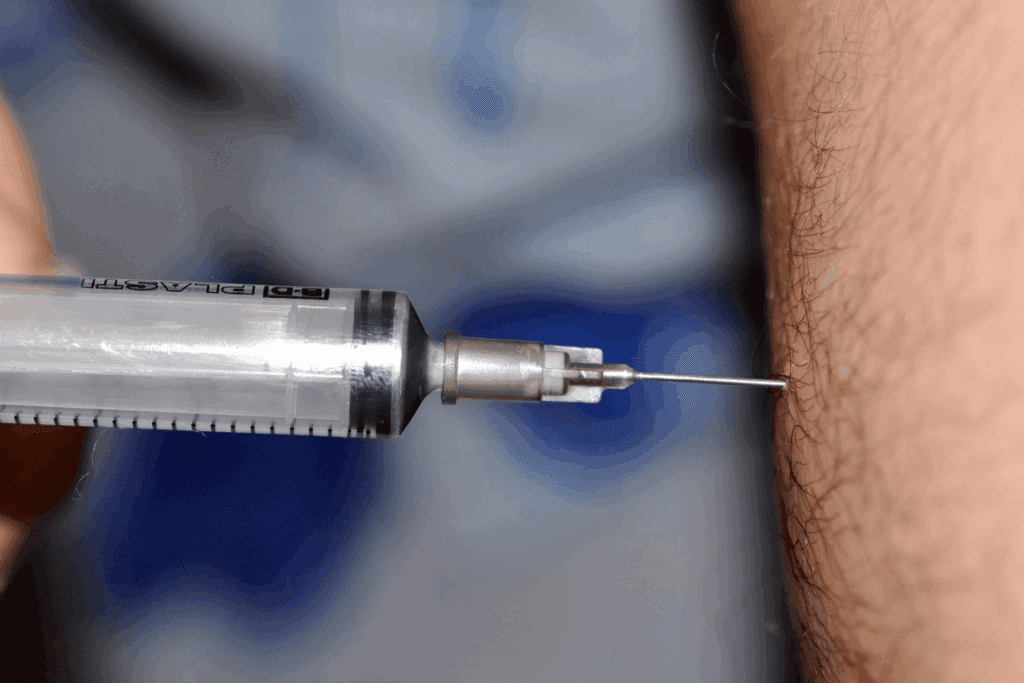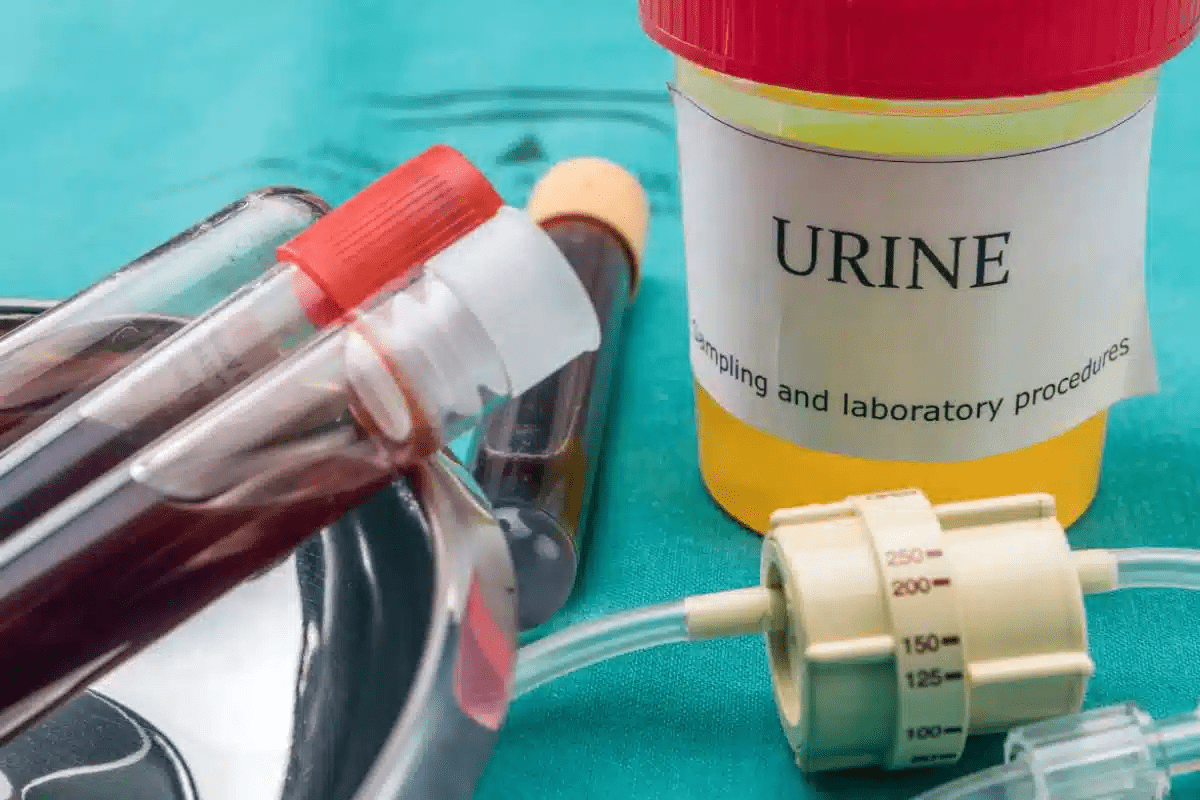Last Updated on November 26, 2025 by Bilal Hasdemir

Sciatica pain can really get in the way of daily life. At Liv Hospital, we know how tough it can be. Cortisone shots, or epidural steroid injections, are a good option for some people with sciatica. They work best when the pain is sudden and caused by swelling around a nerve.
Studies show that most people feel better within two weeks. For many, the relief lasts three months or more, and sometimes up to six months. Many patients ask, “will a cortisone shot help sciatica?” Corticosteroid injections target the pain area, providing quick relief.
Key Takeaways
- Cortisone shots can provide relief for sciatica pain caused by inflammation.
- Most patients experience significant pain relief within two weeks.
- Benefits of cortisone shots can last several months.
- Corticosteroid injections deliver anti-inflammatory medication directly to the affected area.
- Treatment is often considered when conservative methods fail to provide relief.
Understanding Sciatica: Causes and Symptoms

It’s important to know the causes and symptoms of sciatica to manage and treat it well. Sciatica happens when the sciatic nerve gets irritated or compressed. This can be due to herniated discs, spinal stenosis, or piriformis syndrome.
Common Causes of Sciatic Nerve Compression
The sciatic nerve can get compressed for several reasons. Herniated discs are a common cause, where the soft inner gel leaks out and irritates the nerve. Spinal stenosis, or a narrowing of the spinal canal, can also compress the nerve. Another cause is piriformis syndrome, where the piriformis muscle irritates the sciatic nerve.
Recognizing Sciatica Symptoms
Symptoms of sciatica include pain that radiates from the lower back to the legs. This pain can be sharp or dull. It’s often accompanied by numbness, tingling, or weakness in the leg. The severity of these symptoms can vary a lot.
When Sciatica Requires Medical Intervention
Some cases of sciatica may get better on their own, but others need medical help. Severe pain, persistent numbness or weakness, or symptoms that get worse over time mean you need to see a doctor. If you have loss of bladder or bowel control, get medical help right away.
Understanding sciatica’s causes and symptoms helps you choose the right treatment. It also tells you when to seek medical care.
What Are Cortisone Shots for Sciatica?

Epidural steroid injections, or cortisone shots, help with sciatica pain. They put anti-inflammatory medicine right where it’s needed. This cuts down on inflammation and eases pain.
Defining Epidural Steroid Injections
Epidural steroid injections are a type of corticosteroid shot. They go into the space around the spinal cord. This helps lessen inflammation around the sciatic nerve, which often causes pain.
Active Ingredients in Cortisone Injections
Cortisone shots have corticosteroids and a local anesthetic. The corticosteroids fight inflammation, and the local anesthetic numbs the pain. The mix of these two gives quick and lasting relief from sciatica pain.
How Cortisone Targets Inflammation
Corticosteroids in cortisone shots aim at the inflammation around the sciatic nerve. By cutting down this inflammation, they reduce nerve pressure. This helps ease pain. The anti-inflammatory effect is key in managing sciatica symptoms and improving life quality.
Some main benefits of cortisone shots for sciatica include:
- Direct delivery of anti-inflammatory medication to the affected area
- Reduction in inflammation around the sciatic nerve
- Pain relief through both corticosteroids and local anesthetics
- Potential for improved mobility and reduced discomfort
The Science Behind Will a Cortisone Shot Help Sciatica
Cortisone shots help sciatica by reducing inflammation and decompressing nerve roots. These injections are a common treatment for sciatica pain. They work by easing the pressure on the sciatic nerve.
Anti-inflammatory Mechanism of Action
Cortisone shots contain corticosteroids, strong anti-inflammatory agents. Injected near the spinal cord, they reduce swelling and inflammation. This helps to ease the pressure on the sciatic nerve, reducing pain.
Studies show cortisone shots can greatly improve symptoms in sciatica patients. They target the root cause of pain, making treatment more effective.
Nerve Root Decompression Effects
Cortisone shots help sciatica by decompressing nerve roots. When nerve roots are compressed, it causes pain and numbness. By reducing inflammation, cortisone shots help restore normal function and reduce pain.
Pain Signal Disruption
Cortisone shots also disrupt pain signals. The corticosteroids in the shots affect how nerves send pain signals to the brain. This can greatly reduce pain perception, helping sciatica patients.
To show how effective cortisone shots are, let’s look at some statistics:
| Treatment Outcome | Short-term Effectiveness | Long-term Effectiveness |
| Pain Reduction | 70-80% | 40-60% |
| Functional Improvement | 60-70% | 30-50% |
| Patient Satisfaction | 80-90% | 50-70% |
The table shows cortisone shots are very effective in the short term. They help a lot of patients feel better and function better. Even though their long-term effects vary, they are a valuable treatment for sciatica.
The Procedure: What to Expect During a Cortisone Injection
If you’re thinking about a cortisone injection for sciatica, knowing what to expect can help. We get that medical procedures can be scary. So, we’re here to walk you through every step of the cortisone injection process.
Pre-procedure Preparation
Before the injection, our team will get you ready. This includes:
- Looking over your medical history to see if you’re a good candidate for the injection.
- Talking about any medicines you’re taking and telling you which ones to stop before the procedure.
- Telling you all about the procedure, including the risks and benefits.
- Getting your okay before we start.
Getting ready before the procedure is key for a safe and effective treatment. We’ll also give you tips on how to get ready for the day of the procedure. This includes arriving on time and bringing a friend or family member with you.
Step-by-Step Injection Process
The cortisone injection procedure usually goes like this:
- Cleaning and numbing the area where the injection will be given.
- Using fluoroscopy (a special x-ray imaging) to guide the needle into the epidural space.
- Injecting the cortisone medication.
- Watching you for a bit after the injection to see if you have any immediate reactions.
Fluoroscopy helps make sure the cortisone is placed correctly, making the treatment more effective. Our skilled medical team will do the procedure, making sure you’re comfortable and safe.
Post-injection Care
After the procedure, we’ll give you instructions on how to care for yourself. This includes:
- Avoiding hard activities for a little while.
- Watching the injection site for signs of infection or other problems.
- Handling any temporary side effects, like numbness or discomfort.
Following our post-injection care instructions is important for avoiding side effects and getting the most from your cortisone injection. We’re here to support you all the way through your recovery and beyond.
Who Administers Cortisone Shots for Sciatica
Getting cortisone shots for sciatica is a precise process. It needs the right tools and a skilled person to do it.
Medical Specialists Qualified to Perform Injections
Doctors with a focus on pain management or musculoskeletal issues usually give these shots. They include:
- Pain management specialists
- Radiologists with expertise in interventional procedures
- Orthopedic specialists familiar with spinal interventions
- Physiatrists who specialize in physical medicine and rehabilitation
These experts have the knowledge and skills to give the shots correctly. This helps patients get the best results.
Treatment Settings and Facilities
Where you get the shot depends on the procedure’s complexity and your needs. Common places are:
- Outpatient clinics specializing in pain management
- Hospitals with advanced imaging capabilities
- Specialized orthopedic or spine centers
These places have the tech needed for the shot. This includes fluoroscopy or ultrasound to guide the injection.
The Importance of Provider Experience
The experience of the doctor giving the shot is key. An experienced doctor is more likely to hit the right spot. This makes the treatment more effective.
They also know how to handle any problems that might come up. Plus, they can give great advice on what to do after the shot. This helps you recover better and faster.
Choosing a skilled doctor for your cortisone shots can really help. It can make your treatment more successful and relieve your sciatica symptoms.
Cortisone Shots in the Buttocks for Sciatica
Cortisone shots in the buttocks are a good treatment for sciatica, mainly when the piriformis muscle is involved. This method directly targets the pain source, helping those with sciatica find relief.
Targeting the Piriformis Muscle
The piriformis muscle in the buttocks can press on the sciatic nerve, causing pain. Injecting cortisone into this muscle can reduce inflammation and ease pressure on the sciatic nerve. This is very helpful for those with piriformis syndrome, which can feel like sciatica.
By focusing on the piriformis muscle, cortisone shots can greatly help those with sciatica caused by this muscle. The shot is guided by imaging to make sure it’s placed correctly.
Gluteal Injection vs. Epidural Approaches
There are different ways to give cortisone for sciatica relief. Gluteal injections and epidural steroid injections are two common methods. Gluteal injections aim at the piriformis muscle or other soft tissues in the buttocks, while epidural injections go into the space around the spinal cord.
The choice between these methods depends on why someone has sciatica. For those with piriformis syndrome or other buttock issues, gluteal injections might work better. Epidural injections are often used for sciatica caused by spinal disc problems or other spinal nerve issues.
Effectiveness for Different Types of Sciatica
The success of cortisone shots in the buttocks can vary based on the sciatica cause. For those with piriformis syndrome or similar issues, these shots can be very effective. But for sciatica from other reasons, like herniated discs or spinal stenosis, the results are less certain.
It’s important for a healthcare professional to evaluate each patient to see if cortisone shots in the buttocks will work. They consider the patient’s condition, medical history, and other important factors.
Timeline of Relief: When and How Long Cortisone Works
People with sciatica often ask when they’ll feel better after a cortisone shot. The time it takes for cortisone to work varies. We’ll explain what to expect after getting a cortisone injection.
Initial Response Period (First 48 Hours)
Right after the shot, you might feel different. Some see pain drop right away, while others might feel more pain at first. It’s important to remember that everyone reacts differently.
Right away, you might not feel better. Cortisone takes time to start working. It’s key to follow your doctor’s advice after the shot to get the best results.
Peak Effectiveness Window (2-3 Weeks)
Studies say the best results from cortisone shots happen 2-3 weeks later. This is when cortisone’s anti-inflammatory effects kick in, bringing down pain for many.
In this time, you might notice your sciatica symptoms getting better. You’ll likely move more easily and feel better overall. This is the best time to see how well the shot is working.
Duration of Benefits (3-6 Months)
The long-term benefits of a cortisone shot vary. But, many people find relief that lasts months. On average, relief lasts 3-6 months. But, it depends on how bad your condition is and any other health issues you might have.
Knowing when you’ll feel better helps set realistic goals and plan your treatment. Cortisone shots are just one part of your treatment plan. You might also need physical therapy, changes in your lifestyle, and other treatments.
Success Rates: Clinical Evidence for Sciatica Relief
Studies show cortisone injections help a lot with sciatica. The evidence for using cortisone shots for sciatica relief is strong. Many studies look at how well they work in the short and long term.
Short-term Effectiveness Statistics
Cortisone shots can really help sciatica patients in the short term. A big number of patients see improvement in the first few weeks after the shot. Clinical trials show that up to 80% of patients see quick relief. But, results can change based on who is studied and how success is measured.
Long-term Outcomes Research
The long-term effects of cortisone shots are a bit more complex. Some studies say the benefits can last for months, even up to six months for some. But, the long-term success rates are generally lower. This means some patients might need more treatments over time.
Factors Affecting Treatment Success
Many things can affect how well cortisone shots work for sciatica. These include the cause of the sciatica, any other health issues, and the patient’s overall health. How well the shot is placed, with help from imaging, is also key. Doctors need to understand these factors to make treatment plans that work best for each patient.
When Cortisone Shots Don’t Work: Next Steps
When cortisone shots don’t help, it’s key to know why. We’ll look at why they might not work and what to do next for sciatica pain.
Reasons for Treatment Failure
There are many reasons why cortisone shots might not work for everyone. These include the cause of sciatica, how bad it is, and personal factors. Sometimes, the shot might not have been done right, or the inflammation could be too much for one shot.
It’s also possible that the diagnosis was wrong or not complete. A detailed diagnostic reassessment might be needed to find the real cause.
Diagnostic Reassessment
If cortisone shots don’t help, getting a new diagnosis is important. This might mean more tests like an MRI or CT scan to confirm the diagnosis and check for other causes of sciatica pain.
Looking over the patient’s medical history and doing a physical exam can also help find any other issues that might be causing the pain.
Alternative Treatment Pathways
When cortisone shots don’t work, it’s time to look at other options. These could be physical therapy, chiropractic care, or other treatments like radiofrequency ablation or spinal decompression therapy.
In some cases, surgery might be needed to take pressure off the sciatic nerve. A healthcare provider will help create a treatment plan that fits the patient’s needs and goals.
By understanding why treatment failed and looking at other options, patients can find relief from sciatica pain and improve their life quality.
Potential Risks and Side Effects
When we talk about cortisone shots for sciatica, we must also look at the risks. These shots are usually safe but can have side effects. These can range from mild to severe.
Common Side Effects
Most people do well with cortisone shots. But, some might feel pain or discomfort at the site. They might also see temporary swelling or headaches.
- Pain or discomfort at the injection site
- Temporary flare-up of pain or inflammation
- Bruising or swelling at the injection site
- Headaches or dizziness
These effects are usually mild and go away in a few days.
Rare but Serious Complications
Even though rare, serious problems can happen. These include infections, nerve damage, or allergic reactions. They can also cause mood changes or facial flushing.
- Infection at the injection site
- Nerve damage or irritation
- Allergic reactions to the cortisone or other components of the injection
- Temporary facial flushing or changes in mood
Talking to your doctor about these risks is key. This way, you can understand the benefits and risks better.
Long-term Risks of Multiple Injections
It’s also important to think about long-term risks. Getting cortisone shots often can weaken bones or tendons. It can also cause joint or tissue damage.
- Weakening of bones (osteoporosis) or tendons
- Joint or soft tissue degeneration
- Systemic effects from repeated steroid exposure
Talking to your doctor about how often you should get shots is important. This can help avoid these long-term problems.
In summary, cortisone shots can help with sciatica pain. But, knowing the risks and side effects is vital. This knowledge helps patients make better choices about their treatment.
Ideal Candidates: Who Should Consider Cortisone Shots
Cortisone shots can help those with sciatica pain due to inflammation. They offer relief for people with certain medical conditions and profiles.
Medical Conditions Most Responsive to Treatment
Some medical conditions do well with cortisone shots. These include:
- Herniated Discs: Shots can lessen inflammation around the disc, easing sciatic nerve pressure.
- Spinal Stenosis: Shots can reduce inflammation and ease nerve pressure for those with spinal stenosis.
- Piriformis Syndrome: Injecting cortisone into the piriformis muscle can ease pain and inflammation.
Patients with these conditions often see a big improvement after getting cortisone shots.
Patient Profiles That Benefit Most
Not everyone is a good fit for cortisone shots. Those who usually benefit are:
- Patients with acute sciatica due to inflammation.
- Those who haven’t gotten better with physical therapy or pain meds.
- People seeking a non-surgical way to manage sciatica pain.
Identifying the right patient profile helps healthcare providers offer more effective treatments.
When Cortisone Is Recommended in the Treatment Timeline
Cortisone shots are considered after other treatments have been tried. The treatment plan usually goes like this:
| Treatment Stage | Intervention |
| Initial Treatment | Physical therapy, pain medication |
| Secondary Treatment | Cortisone shots for inflammation reduction |
| Advanced Treatment | Surgical options if cortisone shots are ineffective |
Knowing when cortisone shots fit into the treatment plan helps patients make better choices.
Conclusion: Making an Informed Decision About Sciatica Treatment
Cortisone shots can be a good choice for sciatica pain. Knowing the good and bad sides helps patients decide. These shots can ease inflammation and pressure on the sciatic nerve, helping many people feel better.
When looking at sciatica treatment, it’s key to think about the pros and cons of cortisone shots. Talking to a healthcare provider is important. They can help find the best treatment for each person’s needs.
Choosing between cortisone shots and other treatments depends on understanding all options. Patients should talk openly with their doctors. This way, they can get the best care for their sciatica.
FAQ
What is a cortisone shot and how does it help sciatica pain?
A cortisone shot is an injection that reduces inflammation and pain. It’s given into the affected area. This can help sciatica by targeting the inflamed areas around the sciatic nerve.
Will a cortisone shot help my sciatica pain?
Cortisone shots can help sciatica, mainly if it’s caused by inflammation. But, how well it works depends on the sciatica’s cause and the patient’s situation.
What are the common causes of sciatic nerve compression?
Sciatic nerve compression can be caused by herniated discs, spinal stenosis, and piriformis syndrome. These issues can lead to nerve inflammation and compression.
How is a cortisone shot administered for sciatica?
A cortisone shot for sciatica is given by a specialist. They use imaging to guide the injection for accuracy.
What are the possible risks and side effects of cortisone shots for sciatica?
Side effects can include temporary pain relief, numbness, and tingling. Serious complications like infection, nerve damage, or allergic reactions are rare but possible. Long-term risks include osteoporosis and cataracts from repeated injections.
How long does it take for a cortisone shot to work for sciatica?
Relief from a cortisone shot can start within 48 hours. It reaches its peak in 2-3 weeks. The benefits can last 3-6 months.
Can cortisone shots be used for chronic sciatica?
Cortisone shots can treat chronic sciatica, but results vary. If they don’t work, other treatments might be considered.
Who is a good candidate for cortisone shots for sciatica?
Good candidates have acute or chronic sciatica from inflammation. This includes those with herniated discs or spinal stenosis. Those with significant pain and limited mobility benefit the most.
What are the alternative treatment options if cortisone shots don’t work?
If cortisone shots don’t work, other options include physical therapy, pain meds, or surgery. The choice depends on the sciatica cause and patient factors.
Are cortisone shots for sciatica painful?
The injection might cause some discomfort, but anesthetics help. After, some soreness is common and can be managed with meds.
Can I receive multiple cortisone shots for sciatica?
Yes, but repeated shots carry risks like long-term side effects. Always discuss with a healthcare professional before getting multiple injections.
How do I prepare for a cortisone shot for sciatica?
To prepare, talk about your medical history and current meds with your doctor. Follow any pre-procedure instructions, like stopping certain meds or bringing a companion.
References:
ScienceDirect. (2012). Minimally invasive treatment of varicose veins. Galanopoulos, G. (2012). Retrieved from https://www.sciencedirect.com/science/article/pii/S1743919112000313






